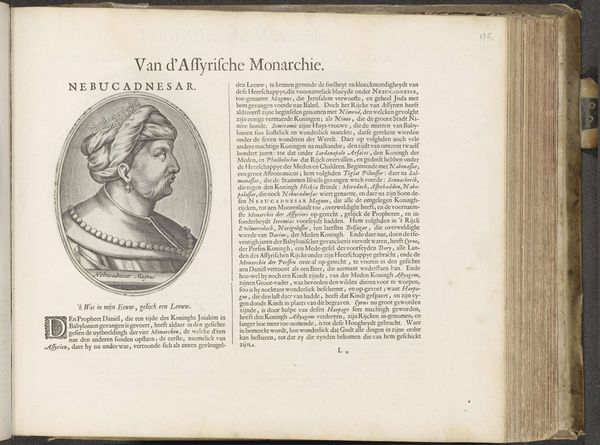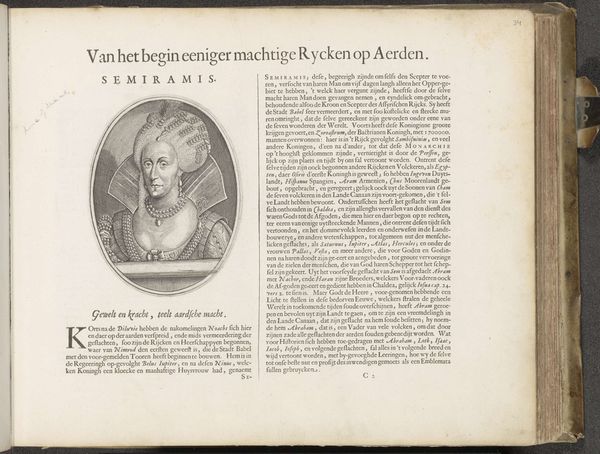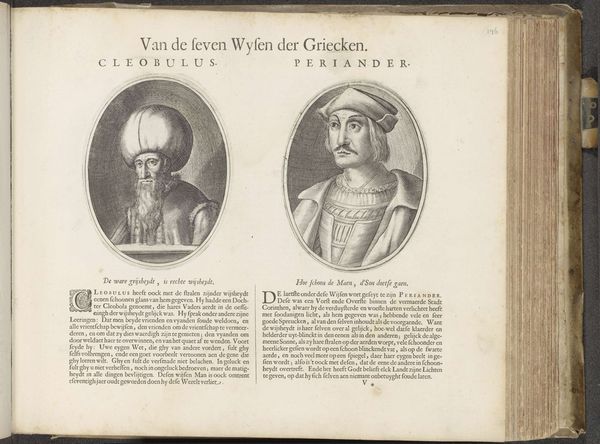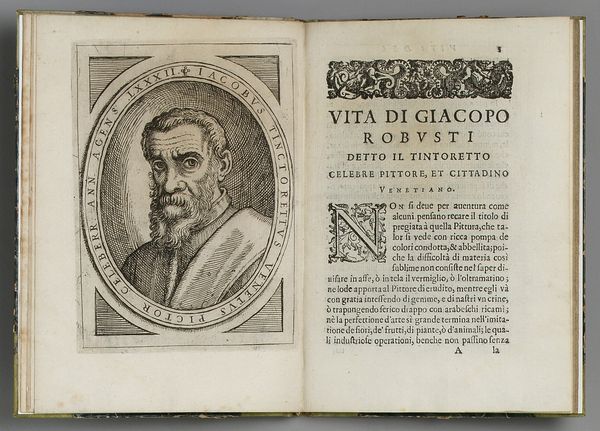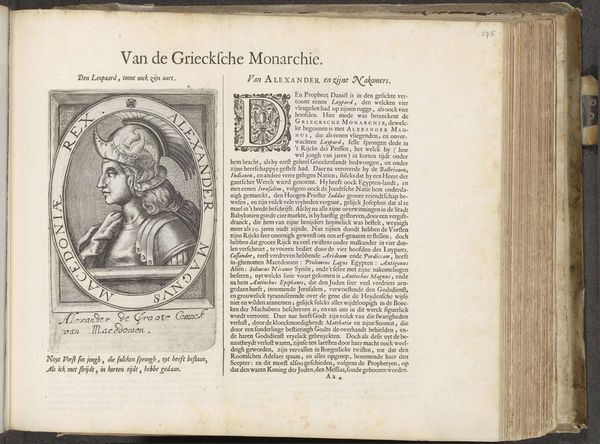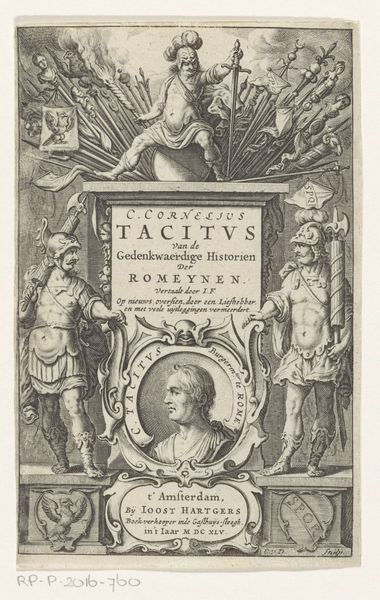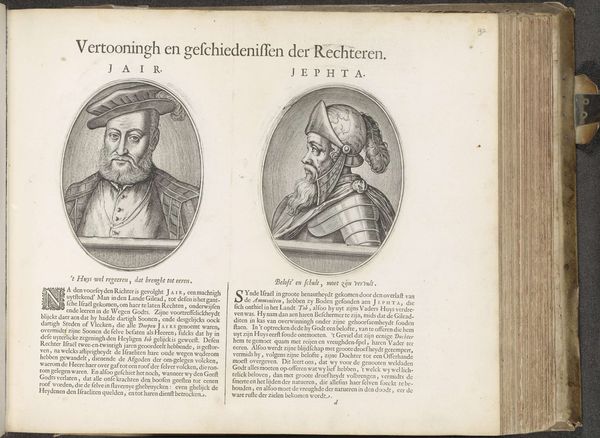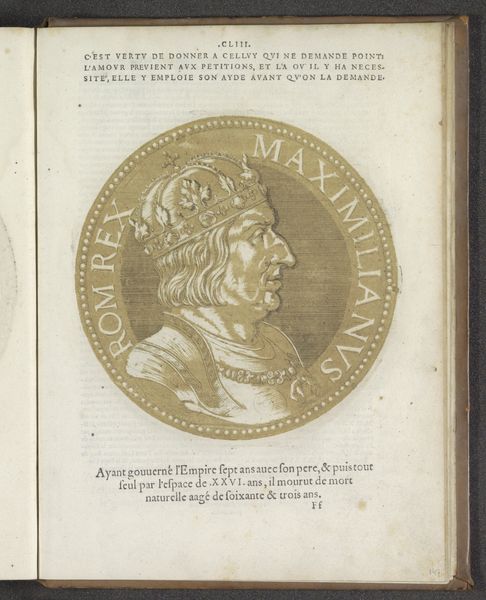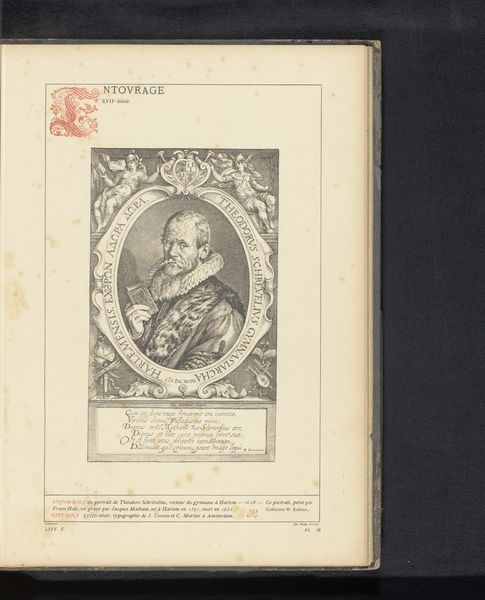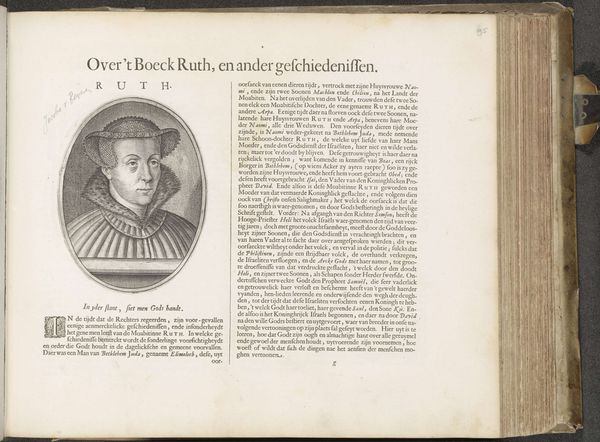
print, engraving
#
portrait
#
parchment
# print
#
old engraving style
#
11_renaissance
#
islamic-art
#
history-painting
#
engraving
#
historical font
Dimensions: height 181 mm, width 125 mm, height 295 mm, width 370 mm
Copyright: Rijks Museum: Open Domain
Editor: Here we have "Portret van Timoer Lenk," likely created sometime between 1575 and 1654. It’s an engraving, a print on parchment. There's a stern, almost haunting quality to the figure. What visual aspects stand out to you the most? Curator: What captivates me is how the artist employs visual symbols to communicate power and lineage, despite cultural distance. The portrait's encased in an oval, a traditional framing device. Have you noticed how that frame isn't just decorative but bears inscriptions? Editor: Yes, I see “TARTARORVM IMPERATOR MAGNVS.” Is that intentional? Curator: Precisely. It anchors Timur Lenk—also known as Tamerlane—within a specific historical and cultural context: the Great Tartar, a figure of immense, even legendary, stature in both Western and Eastern historical narratives. The symbolic weight lies in linking his image with an established, though perhaps exoticized, identity. His clothing blends European aristocratic fashion with perhaps imagined “Oriental” motifs. What feeling does that evoke? Editor: A bit… conflicted? He seems to be both familiar and foreign. Curator: The image functions as a form of cultural translation. It makes Timur Lenk knowable to a European audience. Even the historical font is an active carrier, transporting the weight of historical eras into this printed leaf. Note the Dutch text at the bottom too, and imagine this circulating amongst a readership eager for stories of empires, both near and far. Editor: So the print's about presenting a specific version of Timur Lenk, rather than objective representation? Curator: Exactly! It's a tapestry woven with threads of cultural memory, political agenda, and artistic interpretation. Editor: I never considered how much an image like this could actively construct, rather than just reflect, historical understanding.
Comments
No comments
Be the first to comment and join the conversation on the ultimate creative platform.
